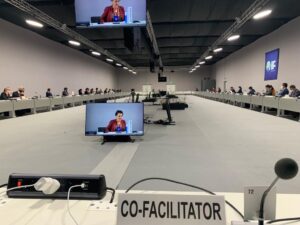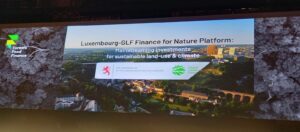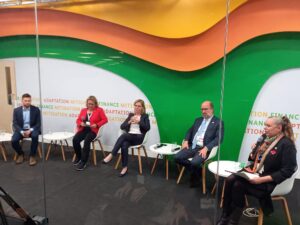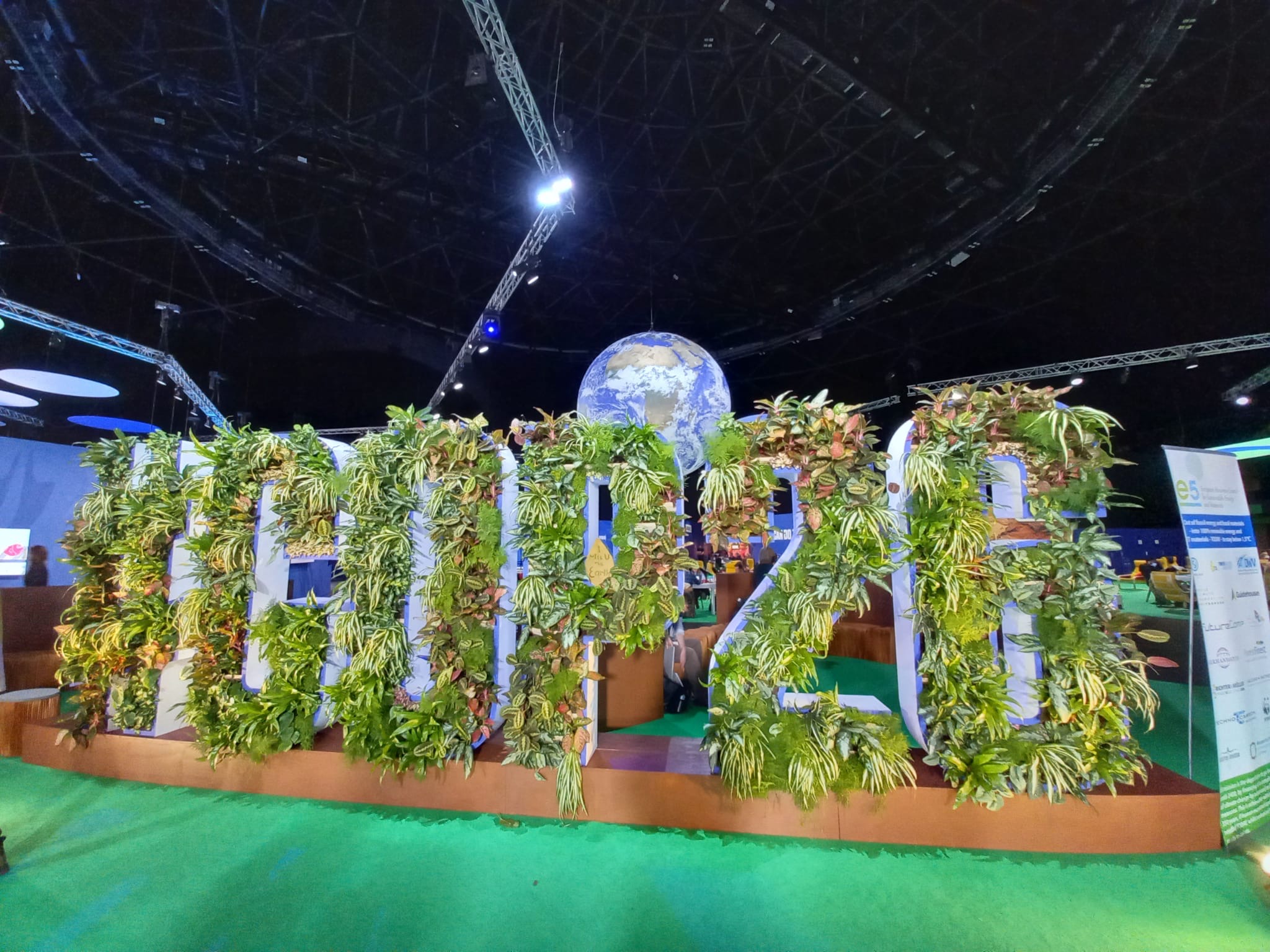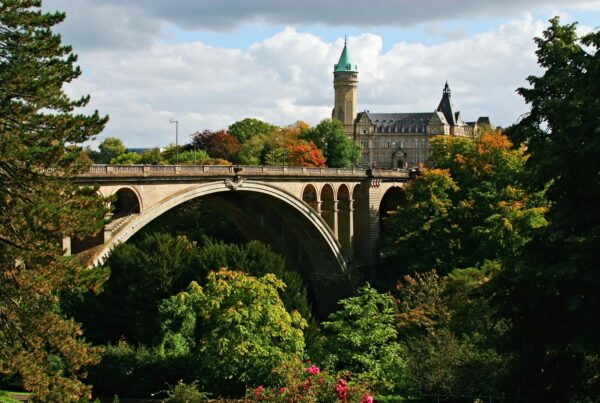The Conference of the Parties, known as COP, is the decision-making body of the UN Framework Convention on Climate Change (UNFCCC), an international treaty to fight climate change signed in 1992 and which has been ratified by 197 countries to date. This year it celebrated its 26th edition.
In brief, it is a two-week international event where government officials, business leaders and scientists present their commitments to cut greenhouse-gas emissions and discuss how to tackle climate change.
As this year’s edition closes its door, we get deeper into this conference by launching a series of articles around COP26. In this series, we will examine how the decision-making process works, what makes this event so unique and what are its main commitments.
For this first release, we have spoken with Jennifer de Nijs (Special Adviser for Sustainable Finance at the Luxembourg Ministry of Finance) and André Weidenhaupt (Director General at the Luxembourg Ministry of Environment, Climate and Sustainable Development). They attended this year’s Conference of the Parties and helped us unveil how a day at COP looks like. Stay tuned, more articles on COP26 to come!
LSFI: COP gathers policymakers, scientists, and activists, among others. You have attended as part of the Luxembourg Ministry of Finance and the Ministry of Environment, Climate and Sustainable Development representation. Could you tell us what is the role of the two ministries at COP?
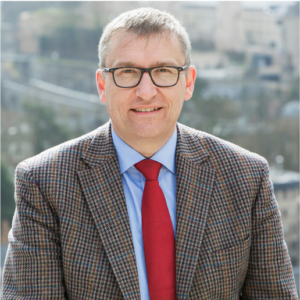
André Weidenhaupt (Director General at the Luxembourg Ministry of Environment, Climate and Sustainable Development)
André Weidenhaupt (AW): The role of the ministers of environment and the civil servants accompanying them is to take part in the multiple negotiations that happen at COP. These are very varied, there is everything related to the United Nations Framework Convention on Climate Change (UNFCCC) and its Paris Agreement, and there are also some more organisational topics that need to be discussed, such as the secretariat, administrative matters, or the budget of the Convention. The decisions related to these issues are taken in plenary meetings. We take part in these negotiations throughout the whole conference. Usually, business-related topics are addressed and concluded during the first week, while other trickier discussions take longer or even extend from one COP to another.
Another role that we play at COP is being a facilitator in the negotiations. Some discussions involve essential discrepancies among the parties and the negotiations can be very extensive. Because of that, two co-facilitators who are represented by two ministers of environment are charged by the COP Presidency to resolve difficult issues. Generally, one represents the north and one the south. In the case of Luxembourg, this year, Minister Carole Dieschbourg has played the role of co-facilitator for the issue of loss and damage together with her colleague from Jamaica.
Jennifer de Nijs (JdN): While ministries of finance of most countries don’t participate in the official negotiations, COP is still a unique opportunity to meet with private sector actors engaged in climate finance, multilateral development banks, global NGOs and other civil servants. Attending events and meetings with these actors help us understand current trends both in the project development, as well as the investment side. It also allows us to discover innovative projects that would not have much visibility in the usual financial markets. Given that the COP is fully international, we also have the opportunity to speak to actors from developing countries. All these conversations help us shape our policies and how the Ministry of Finance can help in adjusting some of these gaps.
In addition, since the last COP (Madrid, 2020), finance ministers have an official role through the Coalition of Finance Ministers for Climate Action, which convenes a meeting at COP. This year, the Coalition issued a statement on strengthening the role of finance ministers in the climate discussion. Finance ministers from major global states attended this year’s meeting, which left a strong message: climate is also at the core of what finance ministers do.
You just explained to us the role of the ministries’ representatives and ministers at this event. We would like to learn more about how a day at COP looks like.

Jennifer de Nijs (Special Adviser for Sustainable Finance at the Luxembourg Ministry of Finance)
JdN: In general, COP is divided into five areas: one for plenaries, one for negotiations, one for countries delegations, one for side events (blue zone) and one for civil society and corporations (green zone). There is always something going on, and our agendas tend to be filled the entire day. The days the Minister is at COP, we have official meetings such as the Coalition of Finance Ministers one. There are also bilateral meetings with other finance ministers or meetings with important stakeholders such as the Green Climate Fund. There are also numerous side events taking place, usually, the Minister participates in some of them. For us, it is also an occasion to meet former and new partners. From my experience, the connections made at COP always lead to something new. For example, in 2016, I met one of the founders of 2DII and learned what the PACTA methodology is about. We have also realised that it is important to keep some time without pre-planned meetings to be able to make those new connections at the pavilions and find out what other countries, institutions, and different players are doing with regards to climate. The networking at COP is unlike any other due to the diversity of its actors and it is very relevant for the working activities for the rest of the year.
AW: In the case of the ministry of environment, we stay at the COP for the whole duration of the conference. We have a small delegation office in the dedicated area that Jenny mentioned. There is where our day starts and where every morning, we prepare for the negotiations and meetings to come. This is followed on a daily basis by an EU coordination meeting at the ministerial level. Afterwards, the sessions start, the nature of these is diverse: some are lengthy negotiations while others might be information gatherings. But all are important to attend to understand countries’ positions. There are also stock take plenary meetings where the COP president, in this case, the UK, informs of where we are. On that occasion, the COP president presents a text to the parties, who are supposed to accept or reject it. This happens reiteratively. Today, for example, a new draft of the COP26 agreement has been released, which could be the primary outcome of this year’s conference.
How does the decision-making process at COP work, and what triggers the different parties to reach agreements and make commitments?
 AW: On the first day of COP, an agenda with the topics to be discussed is adopted. However, this agenda suffers modifications constantly, even every hour.
AW: On the first day of COP, an agenda with the topics to be discussed is adopted. However, this agenda suffers modifications constantly, even every hour.
For the negotiations, countries organise themselves in groups and each of these represents a shared posture. These groups are usually the following ones: the group of 77 and China (formed by developing countries and China, it accounts for 140 nations), the African group, the Arab States, the South American and Caribbean States, Small Island Developing States, Umbrella group, Environmental Integrity group and the EU countries. As mentioned before, there are facilitators in the negotiations for the most sticky items. Those facilitators don’t meet the parties individually but by group. After maintaining conversations with each group and listening to their request, the facilitator proposes a text that can serve as common ground; afterwards, this text is challenged until a decision is taken. At COP, the decisions are taken by unanimity: every party has one vote and all parties have to agree.
Besides, there are some pre-COP events where some topics are decided in advance. The most relevant ones are the meetings of the subsidiary bodies that take place every June for 2 weeks in Bonn at the seat of the UNFCCC, it is called “Bonn Climate Change Conference” and it is where the intermediary work is done.
JdN: As André just mentioned, a lot of things happen before COP. On this occasion, the UK and Italy, the countries that held the presidency, decided on the main objectives and launched different campaigns to mobilise various sectors a year in advance. On the finance side, one of the major campaigns has been the Glasgow Finance Alliance for Net-Zero, led by the UN’s Special Envoy for Climate Finance, Mark Carney. The goal was getting the different financial sectors, such as insurance, banks, asset owners and managers to make a commitment towards net-zero. The campaign culminated at COP26.
With regards to the official negotiations, some countries come with hundreds of negotiators: as the Paris Agreement has many layers, there are numerous topics to discuss, and the negotiations are extensive. In this respect, while there are discussions at pre-COP, they intensify during COP and the aim is to reach an agreement by the end of the conference. Reaching an agreement might turn challenging, on some occasions even the use of some particular wording might become relevant and negotiations can go late into the night.
What have been the main commitments or announcements Luxembourg has made so far as part of this year’s COP?
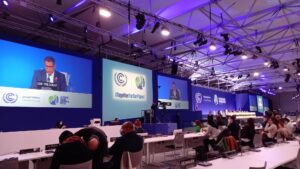 AW: Luxembourg has so far joined several voluntary commitments. For example, the Global Methane Pledge (aiming to reduce methane emission a 30% by 2030) or the zero emissions vehicle initiative by the UK. Also, yesterday, together with the environment ministries of Germany, Denmark, Austria and Portugal we issued a statement pointing out our position against nuclear energy in the European Taxonomy. In addition, the announcements we have made one the finance side are also very relevant.
AW: Luxembourg has so far joined several voluntary commitments. For example, the Global Methane Pledge (aiming to reduce methane emission a 30% by 2030) or the zero emissions vehicle initiative by the UK. Also, yesterday, together with the environment ministries of Germany, Denmark, Austria and Portugal we issued a statement pointing out our position against nuclear energy in the European Taxonomy. In addition, the announcements we have made one the finance side are also very relevant.
JdN: Following what André just mentioned, back in COP15 (Copenhagen, 2009), it was agreed that developed countries would be mobilising 100 billion a year by 2020 in international climate finance. This means developed countries provide capital to developing countries to help them adapt to the effects of climate change. The reasoning: climate-vulnerable nations suffer the stronger climate change effects due to the developed countries emissions. As COP did not take place in 2020, this year, there were many discussions about whether this goal would be reached and pledging a larger amount. Luxembourg had committed 200 million euros for international climate finance as part of that 100 billion between 2021 and 2025, being one of the bigger contributors per capita. At COP, Luxembourg decided to pledge an extra 20 million, which means doubling our envelope for next year. Other countries have done the same. However, we are not yet reaching the 100 billion goal and we might only do this by 2023. Not all countries want to do more than their fair share and that’s where the gap originates.
What makes the Conference of the Parties so relevant?
AW: I have attended several international events such as the UN General Assemblies, however there isn’t any other international conference like COP. It is the largest multilateral event taking place every year and it is very effective. It gathers 40 thousand people together to find a common ground on a very large number of topics related to climate change, that makes it unique.
JdN: I agree. COP is its own bubble and the major climate event worldwide. The closest comparison I can think of is that of a global trade fair. There are official negotiations, plenary sessions with high-level speakers, side events, activists and protests. Countries, institutions, NGOs, companies and initiatives are present, bringing very diverse people together. It takes over whatever city it is in and therefore you spend the day discussing the same topic – climate – with very different actors. That’s unique. Having COP is a considerable achievement, even if the outcome varies from year to year and the ambition levels could always be higher. Without COP, we might not have any multilateral negotiations on climate, nor any accountability. It has also helped to link climate and finance.
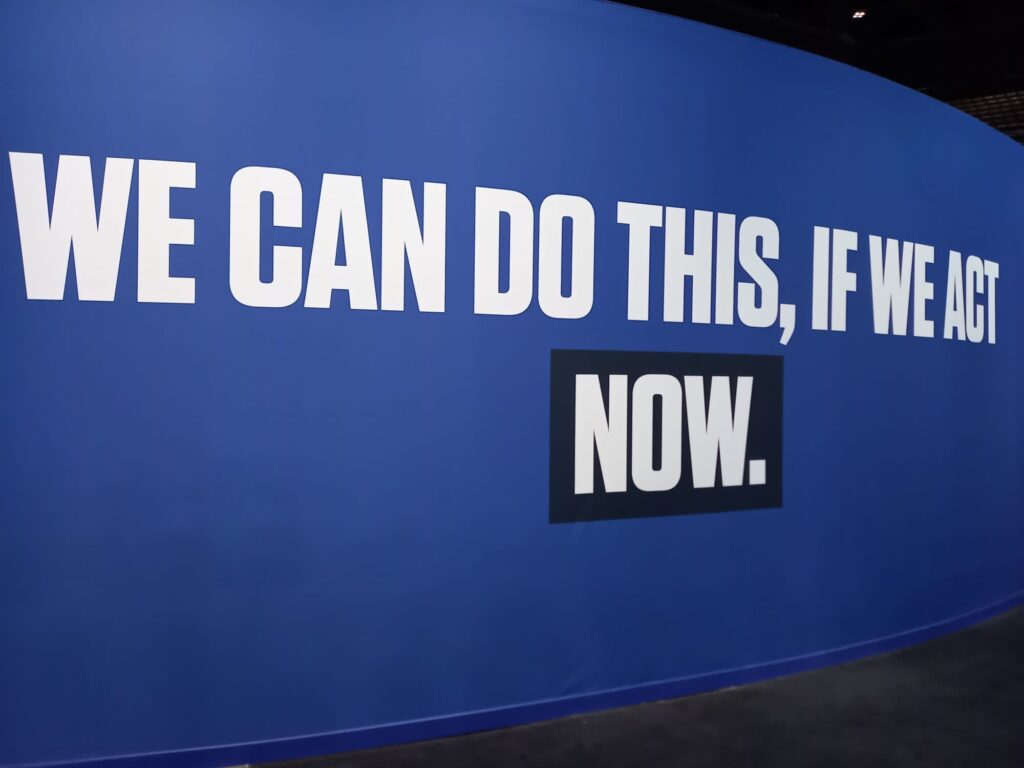
Pictures Gallery – COP26, Glasgow:
